The True US Unemployment Rate, March 2019
Thursday, 08 August 2019By John Komlos, University of Munich & Larry Allen, Lamar University
Introduction
The official unemployment rate is an inadequate measure of labor market conditions. This poses a major challenge for the adoption of adequate economic policy as well as for basic research and therefore challenges our understanding of both economic and political processes. Economists owe to the Bureau of Labor Statistics (BLS) the modern conceptualization and measurement of the unemployment rate. The BLS began measuring unemployment in the 1930s, although it did not start publishing monthly data until 1948. Economist had not previously debated the best way to measure unemployment and had not defined it theoretically. Although they write volumes about the unemployment rate, when it came to measuring it, economists gave a free hand to the statisticians and bureaucrats at the BLS.
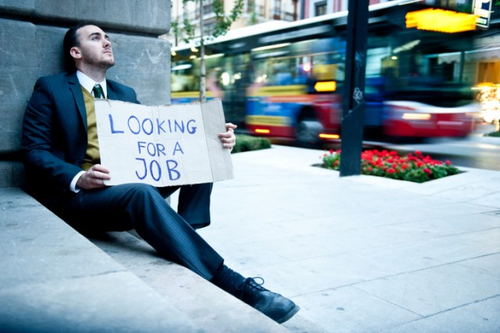
It was the BLS who decided that the unemployed were those who were currently jobless but actively available for and seeking work. It seems a clear enough definition, but from the outset, the BLS was concerned about jobless individuals offering various excuses that were more socially acceptable than admitting that they were only interested in jobs that met very narrow specifications. Therefore, the BLS decided it was not adequate to merely ask a jobless person if they were actively available for and seeking work. The BLS wanted hard evidence, such as that the individuals have actually applied for jobs in the last four weeks. It was assumed that individuals would not apply for jobs unless they thought applying might lead to job offers that they would be glad to accept. In reality, of course, the issue of jobless individuals doing and saying things to maintain social acceptance is not really avoided by accepting job applications as proof that individuals are actively available for and seeking work.
One element that the BLS did not count on was the effect of the pain of rejection in a job search. A series of rejected job applications may induce pessimism and cause individuals to exaggerate the difficulties of landing a job. The result is that these individuals may want and need a job but may delay making job applications until the unemployment rate falls and the economy is booming, which is when employers aggressively advertise that they are desperate for workers.
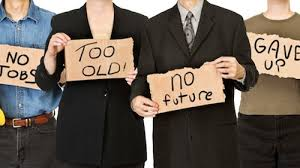
While the official unemployment rate captures those who quickly overcome the pessimism induced by the recession, it ignores a large segment of the labor force that needs a job and may be trolling employment adds for employers who seem desperate enough to hire them. In a summarizing nutshell, the individuals most damaged by an episode of unemployment are the ones most ignored in the official unemployment rate.
Mismeasuring the Labor Market
As often happens, trying to find a purely objective measure of subjective phenomenon created a mess of difficulties. This essay provides evidence that the current definition of the official unemployment rate has become woefully inadequate, and thereby leads to a substantial mismeasurement of the actual condition of the labor market. We continue by comparing the official rate to a broader, more accurate, but lesser-known, measure of unemployment dubbed U6 by the BLS. Finally, we propose a theoretically founded conceptualization of unemployment and find that the real unemployment rate is more than twice the official rate and is even 1 percent above the U6 rate.
That the Western definition of unemployment was inadequate for developing societies, was emphasized a long time ago (Myrdal 1968). To recognize and admit that the official unemployment rate is equally inadequate for a developed society such as the U.S. is well overdue, particularly now that dualism in labor markets typical of developing economies is appearing in developed economies.
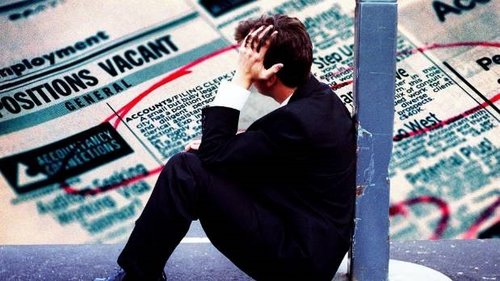
One important reason why official unemployment statistics are woefully misleading, is that they conflate part-time workers with full-time workers (Komlos, 2019). This is relevant inasmuch as the number of part-time workers spiked by some 3 million during the financial crisis, and is still 2.2 million above its pre-crisis level (FRED, series NS12600000). Similarly, involuntary part-time workers, i.e. those who were working part-time because they were unable to find full-time employment, doubled during the crisis from 4.5 million to 9.0 million implying that they were not counted as officially unemployed or even as half-unemployed (FRED, series LNS12032194).
By conflating the part-time with the full-time workers, and by disregarding those who were partly unemployed, the official statistics put a heavy Panglossian sheen on the labor market, especially in recessions (Buffie, 2016). For instance, during the financial crisis of 2008 - 2009 the economy shed 8.3 million jobs officially, but these numbers hid the fact that the number of full-time jobs lost was 11.0 million, that is to say, 2.7 million more (FRED, LNS12600000 CLF16OV, LNU02000000, UNRATE). However, the increase in the number of part-time jobs made the official numbers look better than they actually were.
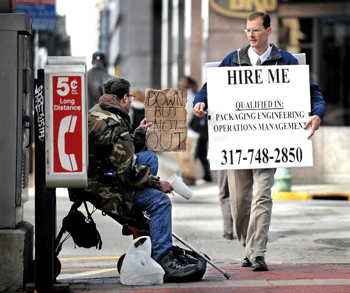
However, the main reason why the official rate is misleading is that the definition is excessively restrictive. It classifies only those unemployed persons as officially unemployed who actively looked for work within the past month (Komlos, 2019). As mentioned above, this requirement is arbitrary and has no theoretical or philosophical justification (Card, 2011), inasmuch as actively searching for work is hardly the essence of being without work. These are two entirely different characteristics of the person in question. Note that (oddly) even gathering information by “simply reading want ads is not considered active job search” by the BLS and is not a sufficient condition for meeting the requirement of actively seeking work (Bradbury 2008). It is possible that unemployed workers who apply for a job at a favored employer and patiently wait for a reply may remain unemployed longer than those who troll the help wanted adds looking for employers aggressively and desperately seeking new employees.

There is no obvious reason why the state of being unemployed should depend on the ability to change that state. After all, being jobless is an objective fact that is not contingent on anything, and wanting to work is a verbal expression of a disposition no more subjective than a statement pertaining to looking for work. By way of analogy, note that I might have a common cold and want the services of a doctor in order to remedy my ills without the ability to pay for it. Hence, my state of being sick is not contingent on my ability to do something about it. It is an objective attribute of my current state of being. Likewise, my being thirsty is not contingent on my looking for a drink even if I would like to have one; after all, I might not have the money to remedy my situation, and I might be living in Flint, Michigan with a contaminated water supply. I might be in the middle of the desert. So, I remain thirsty even if I do not seek to remedy it. It is hardly legitimate to conflate the two issues.
Similarly, with unemployment: there might be many reasons why unemployed persons might not be looking for work even though they would like to work. They might be so discouraged by prior rejections that it seems to them to be a waste of time and money to actively go and look for a job. They might have felt so stressed by having experienced discrimination that their level of depression reached a breaking point. Searching for work under such circumstances might just lead to further frustration, anxiety, and depression (Tcherneva, 2017). Perhaps they do not have gas money or bus fare to go to an interview, or perhaps their car needs to be repaired. That does not make them any less unemployed than someone who does have gas money to search for work. Moreover, in the locality in which they live there might not be any jobs available for which they might qualify, and they lack the money required to move to new places in search of a job. The point is that they are still unemployed, and still want a job, even if they had not had a job interview recently; circumstances might have prevented them from going to interviews although they are still looking at advertisements on the internet and in newspapers. Whether they are going door to door is immaterial to their state of being unemployed.
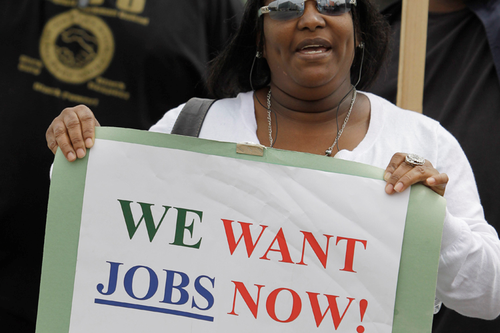
The devastation and helplessness of being unemployed is not contingent on looking for work. Indeed, the profound psychological impact of being unemployed may mean that the person affected is hindered from seeking work actively. This emerged in the first studies on the social and psychological impact of unemployment: “the effects of unemployment eventually emerged: a diminution of expectation and activity, a disrupted sense of time, and a steady decline into apathy through a variety of stages and attitudes” (Jahoda et al., 2002). Hence, the litmus test of being classified as unemployed should not be based on whether the person in question is actively looking for work but whether they are willing and ready to work. Unemployment should mean that the person desires to work but is not working.
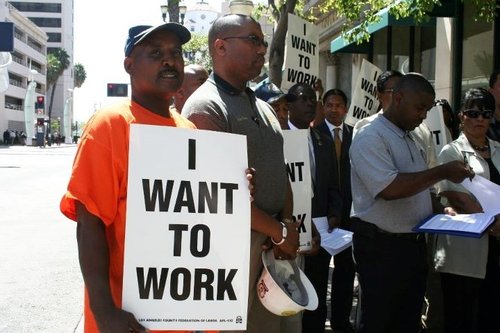
This is a crucial issue, because the restrictive official definition causes the unemployment rate to appear to be much less than it actually is. This implies that a crucial economic variable is systematically underestimated causing confusion (Feldstein, 2017; Leonhardt, 2018; Stiglitz, Sen, and Fitoussi, 2010). Inappropriate economic policies follow from bad data. In addition, the mismeasurement leaves analysts to wonder why there is so much discontent in a society with full employment (Case and Deaton, 2017; Sachs, 2019). Of course, this also impacts basic research, insofar as econometric estimates in “the presence of measurement errors causes biased and inconsistent parameter estimates and leads to erroneous conclusions” in a myriad of ways (Hong 2008). This is particularly important for the unemployment rate that is the centerpiece of thousands of research projects (Card, 2011).
To be sure, since 1994 the BLS does publish other data relevant to unemployment which it euphemistically dubs “alternative measure of labor underutilization” and “marginally attached workers”, or U6, but it still conflates full-time with part-time workers. Nonetheless, these data are much more realistic estimates of the true unemployment rate.
The Real Unemployment Rate
Objectively there can be no doubt that part-time workers should not be conflated with full-time workers (since they work about half as much as full-time workers). So, the first task of an accurate estimation of the labor force is to add just half of the part-time workers to the full time-workers (Table 1, row 2). Second, there is no theoretical reason to exclude those who work for the military since they receive a salary and they do work full time. Hence we include their number as well in the labor force (Table 1, row 3). To this, we add the number of really unemployed, the calculation of which is discussed below (Table 1, row 4). This yields a total effective labor force of 164.5 million.

The true unemployment rate consists of the those officially unemployed, plus half of those who are working part-time involuntarily since they would like to work full-time, plus those who would like to work but have not looked for work within the previous month (Table 1, rows 5, 6, and 7). Such a calculation yields the true number of unemployed in March 2019 as 13.7 million and a true unemployment rate of 8.3%; this is 4.5% higher than the official unemployment rate and even 1% higher than the U6 rate. This implies that the official unemployment rate is just 46% of the actual rate (Table 1). Even this leaves out of consideration the 2.3 million people who are incarcerated and presumably would want to work but did not find adequate employment in the legal labor market. Their numbers would raise the true unemployment rate to 9.6%.
Table 1: The Real Unemployment Rate in the U.S. March 2019
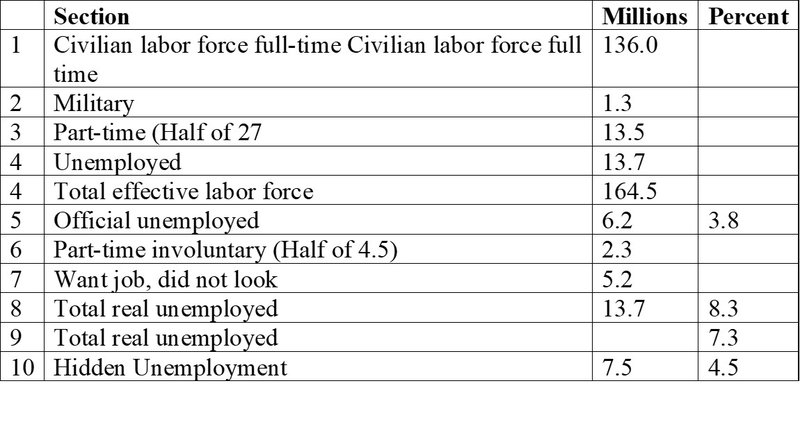
Conclusion
Obviously, unbiased empirical research in economics on which valid theories can be based requires that a crucial and one of the most closely followed variables, such as the unemployment rate, be measured as accurately as feasible. Moreover, insofar as the results of this research occupy such a significant position in formulating and implementing economic and social policy it is incumbent upon the economics profession to estimate the nature of the labor market realistically. Needless to say, politicians also require accurate data to form their views, to formulate their platform, and vote on policy accordingly. All this implies that economists should proceed as objectively as possible and estimate the unemployment rate in such a way that it mirrors accurately the conditions of the labor market. This also means that the bias should not have a differential impact on minorities.
The inadequacy of the official unemployment rate poses a major challenge for the adoption of adequate economic policy as well as for basic research and therefore challenges our understanding of both economic and political processes. The U6 unemployment rate is much closer to capturing the realities of labor market conditions and is usually about 4% above the official rate. However, during the Great Recession, the official rate was 7% below the U6 rate for three years. In percentage terms, the difference between the two rates increased from 82% throughout most of the period under consideration to 100% at the end of 2014 implying that the bias of the official rate has been increasing in percentage terms. In sum, the misleading nature of the official unemployment rate has a major impact not only on academic economics but also on the political process including presidential elections.
According to most mainstream economists, the U.S. economy has been at full employment for some time (Feldstein 2015, 2016a,b). The fact that the official unemployment rate has been uncannily lower than the natural rate of unemployment for two years since March 2017 and in April 2019 is a full one percent lower, without causing an acceleration in the inflation rate should be quite a conundrum for theorists (FRED, series UNRATE, and NROUST). That is not supposed to happen. The most likely inference is that the unemployment rate is measured inaccurately. Pundits also wonder why wages are not increasing in a supposedly “tight” labor market. The answer is obvious: the labor market is far from tight and far from being at full employment. Moreover, policymakers, political candidates, as well as the general public are quite confused about why there is so much discontent in the society if the “economy is in good shape” as Feldstein and many of his colleagues insist. For instance, at the January 2016 meeting of the American Economic Association in San Francisco, Martin Feldstein declared confidently that “The U.S. economy is in good shape…..We are essentially at full employment with the overall unemployment rate at 5%” (Feldstein 2016a,b,c). His pronouncement, widely reported in the media, could well have led Hillary Clinton to be more sanguine about her prospects than she should have been. Note, furthermore, that the implication of the word “essential” in his statement was no doubt overlooked in the public. Moreover, a Harris Poll found that shortly after Feldstein spoke, 43% of the jobless “have completely given up looking for work and most have not had an interview in the previous couple of years” (Funk, 2016). This is a natural psychological response to adversity.
About The Authors
John Komlos is Professor Emeritus of Economics and of Economic History at the University of Munich. He holds two Ph.D.’s from the University of Chicago, one in history and one economics. His experience spans two continents, teaching at Duke, Harvard, North Carolina at Chapel Hill, the University of Vienna and in Switzerland. He made studying the impact of economic processes on human biology his life’s work, founding a new field, “Economics and Human Biology” and establishing a journal bearing the same name. Both The New York Times, and The New Yorker magazine have carried articles focusing on this work. He now describes himself as a “humanistic economist.” He blogs for PBS on current economic issues and has recently published the second edition of his textbook entitled Foundations of Real-World Economics.
Larry Allen is a Professor of Economics at Lamar University in Beaumont, Texas. He has written five books, The ABC-Clio World History Companion to Capitalism, Encyclopedia of Money, The Global Financial System:1750-2000, The Global Economic System Since 1945, and The Global Economic Crisis.
References
Bradbury, Katharine (2008) “Unemployment Measurement,” in: Palgrave Macmillan (eds) The New Palgrave Dictionary of Economics. Palgrave Macmillan, London.
Buffie, Nick (2016) “The Case for a Weak Labor Market,” Center for Economic and Policy Research Working paper, September.
Card, David (2011) “Origins of the Unemployment Rate: The Lasting Legacy of Measurement without Theory,” American Economic Review: Papers & Proceedings, 101, 3: 552-557.
Case, Anne and Angus Deaton (2017) “Mortality and morbidity in the 21st century,” Brookings Papers on Economic Activity, Spring, 397-476.
Feldstein, Martin (2016a) “The U.S. Economy is in Good Shape,” The Wall Street Journal, February 21, 2016.
Feldstein, Martin (2016b) “United States Economy: Where To from Here?” Presented at American Economic Association meeting in San Francisco, January 3, 2016; https://www.aeaweb.org/webcasts/2016/Economy.php accessed April 19, 2019.
Feldstein, Martin (2016c) “Dealing with Long-Term Deficits.“ American Economic Review: Papers & Proceedings 106 (5): 35-38.
Feldstein, Martin (2017) “Underestimating the Real Growth of GDP, Personal Income, and Productivity,” Journal of Economic Perspectives, 31, 2: 145-164.
FRED: Federal Reserve Bank of St. Louis, various series, https://fred.stlouisfed.org/ accessed May 23, 2019.
Funk, Robert (2016) “New Poll Explores Plight of the Unemployed,” Express Employment Professionals, June 8, https://www.expresspros.com/Newsroom/America-Employed/New-Poll-Explores-Plight-of-Unemployed.aspx accessed May 21, 2016.
Hong, Han (2008) “Measurement Error Models,” in: Palgrave Macmillan (eds) The New Palgrave Dictionary of Economics. Palgrave Macmillan, London.
Jahoda, Marie, Paul Lazarsfeld, and Hans Zeisel, Marienthal, The Sociography of an Unemployed Community. (Abingdon-on-Thames, UK: Routledge, 2002); first published in 1933 in German.
Komlos, John (2019) Foundations of Real-World Economics: What Every Economics Student Needs to Know. (New York, US: Routledge)
Leonhardt, David (2018) “We’re Measuring the Economy All Wrong,” The New York Times, September 14.
Myrdal, Gunnar (1968) Asian Drama, an Inquiry into the Poverty of Nations (New York: Patheon).
Sachs, Jeffrey (2019) “America’s Illusions of Growth,” Project Syndicate, May 14.
Stiglitz, Joseph, Amartya Sen, and Jean-Paul Fitoussi (2010) Mismeasuring Our Lives: Why GDP Doesn’t Add Up (New York: The New Press).
Tcherneva, Pavlina (2017) "Unemployment: The Silent Epidemic," Levy Institute Working Paper 895.